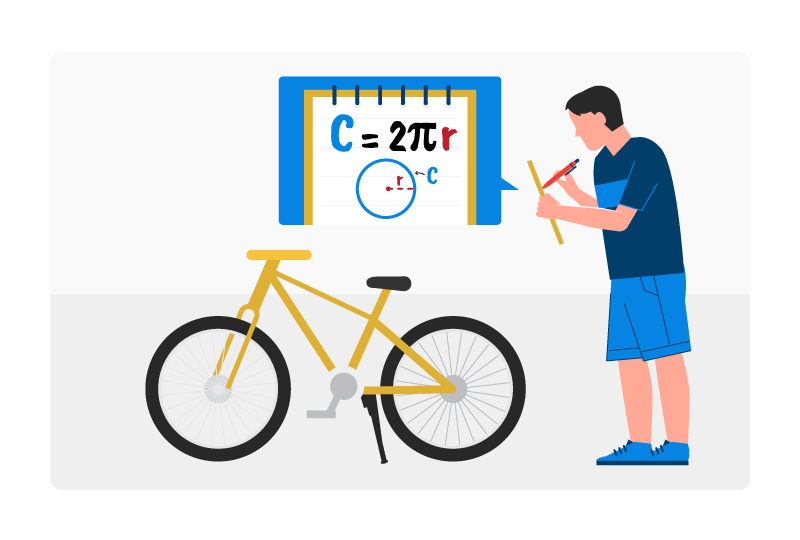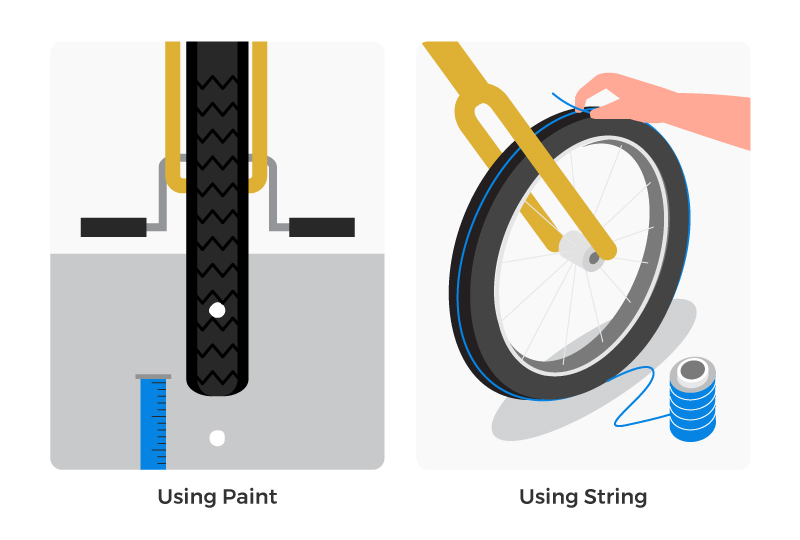If your bike is slow and inefficient, inspect its wheels. Sometimes a bike fails to work right because its wheels are of the wrong sizes.
And, no biker goes wrong with a ride of correct wheel-size. It assures comfort and also eases the riding experience. Well, you must concur that the joy in riding is in speed and comfort, right?
Finding fitting wheels seems like an easy task until you come across the wide variety of sizes you need to scour through in the market.
So, how do you discover the most suitable tire size befitting your riding style? How do you measure correctly? Well, this full-scale guide will take you through finding the perfect wheel measurements for your ride.
Table of Contents
The ISO Measuring System
In the past years, every bike manufacturing country developed specific systems of marking its wheel sizes. This practice made the market to flood with a bewildering variety of tires.
Such confusion made most riders to go for whatever bike wheel they found. Like, what would you do if you stumbled on same-size tires with different numbers or different-sized wheels with similar tags?
The sizing inconsistencies pushed the International Organization for Standardization (ISO) to come in, then draft, and publish international standards for the tire sizes.
This body specified a computing technique to control the wheel measurement system. The system specifies two crucial parts-diameter and width.
These two numbered parts are separated by a dash, with the initial one showing the width and the second one, the diameter.
The ISO system also requires that the tire sizes measure in millimeters. Therefore, should you be stuck, the ISO measuring system is your go-to technique to get befitting tires.
How To Measure A Nike Wheel Step By Step
Most tires come with size tags, making most riders ignore the vitality of knowing how to measure the wheel on their own.
But isn’t it better to be the DIY person and measure the tires by yourself? Plus, it might come in handy if you are poor at memorizing.
Measuring a wheel is easier than you think. The fact that you only require a pen, paper, and tape to go about makes it much undemanding.
Do you have the three crucial tools in tow? If yes, go ahead and measure. Here are some steps you can follow when measuring the wheel size of your bike.
1. Prepare Your Bike / Bike Wheels

To find the wheels’ size, you’ll have to prep your bike in a way that won’t interfere with the scaling. To do it, lean your bike ride against the wall or set it in a standing position using the kickstand.
Ensure it is firm because any movements from the bike can mess up the readings. You can use a sturdy tape to hold it in place. Apart from that, ask someone to help hold it for you.
2. Measure The Diameter

With the bike in a steady position, put a tape measure against the core of the wheels. After that, extend the tape tightly and straight towards the tire’s inner edge as required by the ISO standards.
However, the reading you’ll get is the radius. Therefore, you should multiply the number by 2 to get its diameter. Your diameter will be the most comprehensive reading.
And, it would be best if you understood that the diameters of the wheels are usually in whole numbers. Therefore, always round off your measurements if you get a ‘point something.’
3. Measure The Width

Tire widths vary depending on the bicycle’s intended usage. For instance, a bike meant for rougher terrains will be thicker than those meant for even and trouble-free rides.
Finding the width should be the most straightforward task. You only have to take the tape and place it on the flat ground surface. After that, run it across the tire tread-from one side to the other side- in a straight direction.
You should record your results in millimeters.
4. Calculate The Circumference

Getting the circumference requires you to calculate the distance around the entire wheel. To get the circumference, you should also understand the ratio between the circumference and the diameter- 22/7or 3.14 (Pi).
To find the circumference, take the readings of the diameter and multiply it by the pi(C=πD). For instance, if your diameter reads 70mm, you will calculate 22/7× 70 or 3.14× 70.
If you are using the radius, you will use the C=2πr formula. For example, if the radius is 35mm, your circumference will be 2×35×3.14.
Measuring The Circumference Without Calculation

Do not panic when you are in a situation where the pen, paper, and tape are inaccessible. Why should you, when there are two ways to measure the circumference without the diameter readings? Luckily, they are now within your reach. These ways are:
Using A String
Can you find a string? If yes, then you are good to go. Start by wrapping the string around the wheel’s outer edge and mark at the complete revolution.
After making the full revolution, remove the string and use a tape to measure from the starting point to the marked spot. The measurement you get is your circumference.
Using Wet Paint
If you have paint, use a stick or a brush to mark the part of the wheel that touches the ground, and the ground itself. You can also use paper if you want.
Ensure that the amount of paint you apply on the tire is sufficient to make the mark visible.Then roll the bicycle wheel in a straight line until it marks the second dot on the paper/ the ground.
The mark is an indication that the wheel made a full rotation. Measure the distance from the first dot to the second using a tape measure to get the circumference.
Enjoy The Ride
There you go! You now have the measurements for the right wheel for your ride. When you reach your favorite bike shop, compare your measurements to the wheel size chart, and pick the closest figure. After that, you can go ahead and purchase your brand-new wheels.

